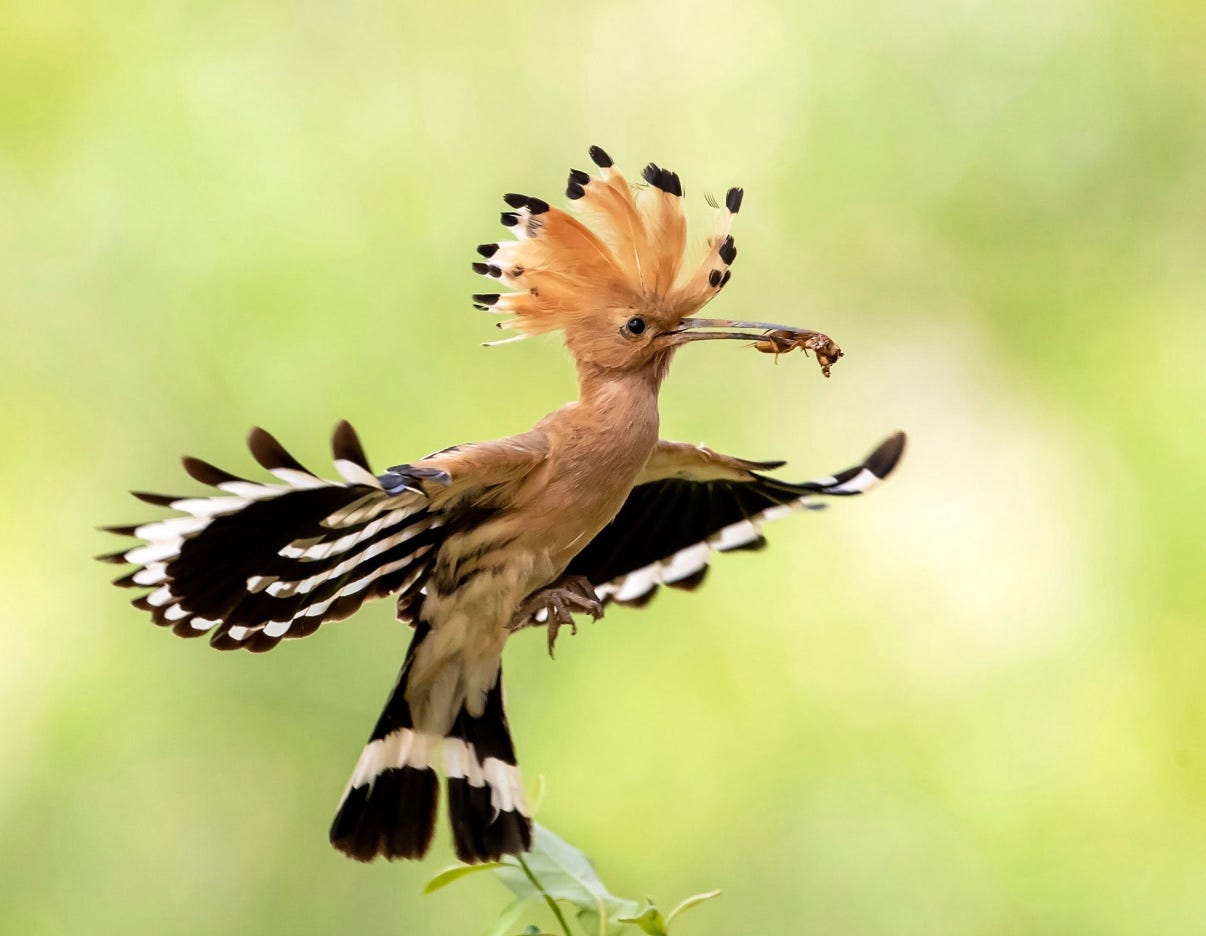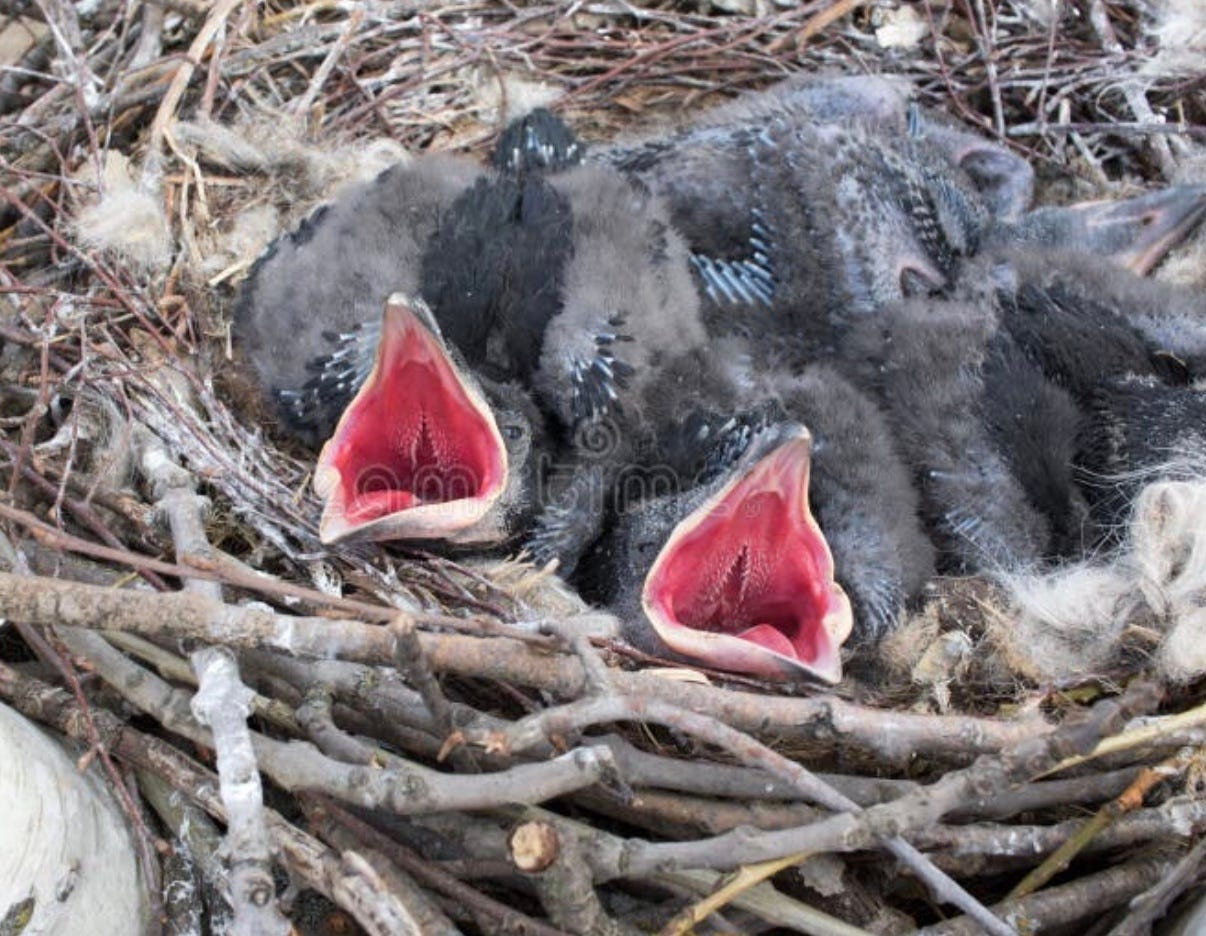There’s a bit of a buzz among the bird enthusiasts of West Cork at the moment. A rare visitor has touched down — or been blown in — the hoopoe. A migratory bird with a pinky-cinnamon breast, an extravagant black-and-white crest like a mohawk, and wings that flash like a zebra when it flies. It’s the sort of bird that looks painted rather than evolved — a bit absurd and wholly beautiful, as if it wandered out of a dream and into a hedgerow.
I was especially amused to hear that our native robins have been quite put out by this flamboyant stranger. Perhaps it's the crest. Or the swagger.
Word is, one’s been spotted around Galley Head. It made the local newspapers, and the WhatsApp birding groups have been lighting up. I’m planning a trip out that way this weekend, to try my luck. I’m quietly hopeful that I’ll see one — but really, it’s the trying that matters. A coastal walk is always a gift. But a coastal walk with a purpose, a sense of quest — that’s where the old thrill of seeking returns, the kind that lights the imagination and brings the senses to life.
Even if the hoopoe eludes me, the birds have been showing themselves lately — or maybe I’ve simply started looking more closely. It’s amazing what begins to emerge when we bring our attention to the world.
Earlier in the week, I walked the path that winds along the cliffs near Courtmacsherry. One section of it is called the Lusitanian Trail, named after the RMS Lusitania, the grand transatlantic passenger liner torpedoed by a German U-boat in 1915, just eleven miles offshore. Over a thousand people died in that sinking. And now, a century later, the trail named for that tragedy is a place of bluebells and birdsong, where ferns uncurl in the spring warmth and the sea carries its own slow, eternal rhythm.
I love those quiet intersections of past and present. How you can be out for a walk on an ordinary weekday and find yourself brushing up against history. A name like “Lusitanian” might slip past the casual walker, but it’s a small invitation — a doorway into memory. Names hold stories, and the land holds them, too.
From the headland, you can see the Old Head of Kinsale lighthouse, blinking its steady signal, just as it has for more than a hundred years. One of those small, constant presences in a world that feels increasingly fast and fractured.
As I followed the trail, something pulled my attention — not a sight, at first, but a sound. A rasping squawk, loud and raw, echoing from the cliff below. I stopped and scanned the rock face. And there it was: a raven’s nest, wedged into a crevice about seven metres above the tide. Inside, three chicks, already the size of moorhens, their downy heads poking above the rim, beaks yawning wide to the sky.
The parents circled overhead in wide, commanding arcs, then settled on the rocks like sentinels — watchful, silent, dark against the sky. I stayed for a long time, just watching — and being watched.
There’s something mythic about ravens. They feel like birds from the Otherworld, ancient and knowing. In Norse and Celtic myth they are birds of prophecy and war, of vision and transformation. They belong to that in-between world, and nesting on the edge of a sea cliff — between land and ocean, rock and sky — they seemed perfectly placed in the liminal. It felt like I was witnessing something older than language. A rite as old as the land itself.
I’ve been using the Merlin app lately, at a friend’s suggestion. You open it, press record, and it listens to the soundscape around you — then begins identifying the birds by their calls. Goldfinch. Wren. Chiffchaff. Blackbird. What was once a vague chorus of birdsong becomes a layered, unfolding conversation. It’s like walking with new ears.
There’s a quiet joy in learning their names. It makes the world sharper, more vivid. A burst of song becomes not just background noise, but a particular voice — a robin calling from the gorse, a long-tailed tit flitting through the brambles. Listening becomes a form of reverence. And attention — real, loving attention — always brings us closer.
Of course, all this is happening against a backdrop of global unrest. It’s hard not to feel the tension in the air — politically, environmentally, existentially. The news rolls in fast and hard, and it’s easy to feel overwhelmed by the scale of it all. Some days it feels like we’re standing at the edge of something unraveling.
And yet, it’s precisely in those moments that we need to return to the ground beneath our feet. To the sea. To the birds. These small, steady presences hold us in ways we forget to notice.
At the same time, I’ve found myself drawn to darker reflections — not in despair, but in a desire to look clearly at what’s happening. On my desk this week was Ted Hughes’s Crow, a strange and potent book I return to now and again. It’s a mythology of sorts, brutal and enigmatic, where the bird Crow — dark trickster and witness — stumbles through a broken cosmos trying to make sense of it.
One poem in particular, Crow’s Account of the Battle hit hard this week. Hughes doesn’t flinch. It is not an easy read. Just the raw truth of what we are capable of.
And yet, even in that bleak landscape, there is a kind of call. A fierce, necessary seeing. Hughes believed that poetry — and nature — could reconnect us to something deeper, to the wild, to the truth of life. That through art, we might cross the void between ourselves and the living world.
I leave it to yourselves to seek the poem out…
I often recall something Carl Jung said — that if you want to know what might bring you joy, or lead you back to your true path, you should think about what you loved doing as a child. The thing you did without anyone telling you to, for no reward other than the joy of doing it.
For me, it was two things: writing little stories. And watching birds.
I didn’t set out to return to them, but here I am. Notebook in hand. Eyes to the sky.
So if you’re feeling a little off-course, like the hoopoe — go outside if you can. Follow a path. Bring your ears. See what shows up.
Maybe the winds that blow us off our familiar routes are the same ones that carry us toward something unexpected — something beautiful.
I’ll be out there somewhere. Maybe near Galley Head, scanning the hedgerows.
Maybe I’ll see you there.







That was an inspirational piece of writing.
Thank you very much.